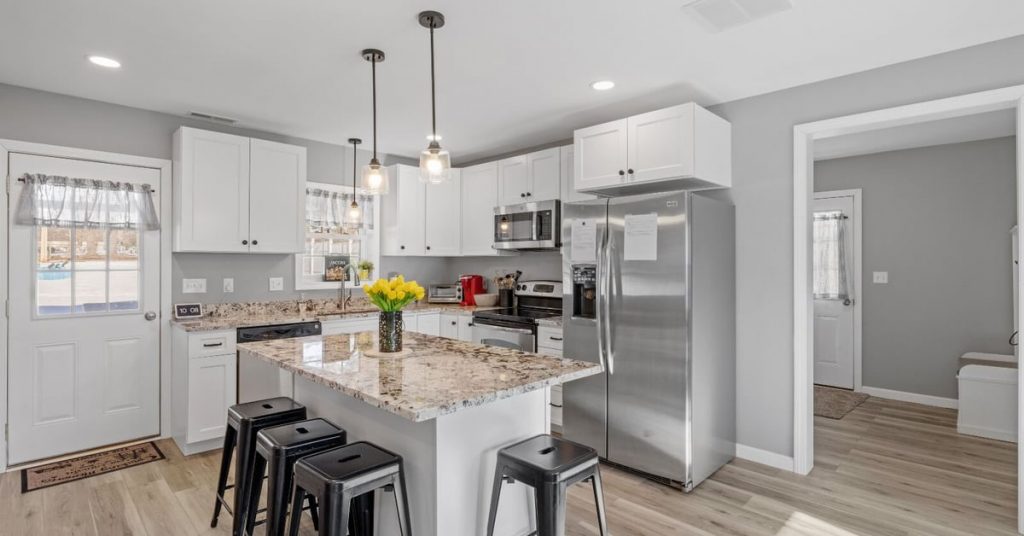
Did you know the kitchen is the heart of the home, and can significantly impact your property’s value? Discover practical tips and ideas to transform your kitchen today!
The kitchen is often referred to as the heart of the home. It’s where families gather, meals are prepared, and memories are created. However, as lifestyles change, so do kitchen needs. Kitchen remodeling can breathe new life into your space, enhancing aesthetics and functionality. How do you start this significant project? What trends should you consider? And what pitfalls can you avoid? In this article, we will explore essential insights that will help you navigate your kitchen remodeling journey. From understanding the costs to choosing materials, and from smart design trends to tips on working with professionals, we’ll provide a comprehensive guide to ensure your remodeling project is a success. Whether you’re aiming for a complete overhaul or a simple update, there is something for everyone.
Before diving headfirst into remodeling, take time to assess your current kitchen. Consider how you use the space—what works and what doesn’t? Jot down your daily activities: cooking, entertaining, or simply grabbing a snack. This evaluation will guide your decisions.
Pay attention to the kitchen layout. The work triangle concept, which connects the stove, sink, and refrigerator, is essential for efficiency. If your kitchen feels cramped or dysfunctional, it may be time to rethink the layout. Think about open-concept designs that blend kitchen and living space, making it more social. You should also evaluate storage: Is there enough cabinet space? Are your appliances outdated? These assessments will help pinpoint the changes needed.
Budgeting is a crucial aspect of kitchen remodeling. According to Remodeling Magazine, kitchen remodels can range from $5,000 for minor updates to over $50,000 for major transformations. Determine how much you are willing to invest, but be prepared for unexpected costs. It’s recommended to set aside an extra 10-20% of your budget for surprises like hidden plumbing issues or needing additional materials.
To create a realistic budget, list your priorities. Are you focusing on new cabinets, countertops, or flooring? Categorize your spending according to your priorities. Don’t forget about labor costs if you plan on hiring professionals. It’s essential to collect multiple estimates for any work you need done, ensuring you get good value for your investment.
Selecting materials can be overwhelming given the vast options available. Hard surfaces like granite and quartz are popular for countertops, reflecting durability and style. For cabinetry, consider solid wood for longevity, while laminate offers a budget-friendly alternative.
Styles often set the tone of your kitchen; from modern sleekness to rustic charm, the design should reflect your personality. A trending choice is the farmhouse style, characterized by warm colors and vintage accents. However, the minimalist aesthetic continues to thrive too, emphasizing simplicity and function. Make sure to prioritize materials that are not only stylish but also suit your lifestyle needs—easy-to-clean surfaces and durable finishes are ideal for busy kitchens.
Technological advancements have transformed kitchen spaces. Smart kitchens are now equipped with appliances that enhance convenience and efficiency. Consider installing smart refrigerators that keep track of your groceries or ovens you can control via your smartphone. Voice-activated assistants can simplify daily tasks, controlling lights and managing timers while you cook.
Not only do these features offer practicality, but they also add a modern touch to your kitchen design. Additionally, prioritize energy-efficient appliances; they may cost more upfront but will save money on utility bills over time. This tech-savvy approach to kitchen remodeling appeals to buyers as well, which can increase your home’s value.
If your remodeling plans are extensive, hiring a contractor can ease the burden. First, do your research: look for contractors with strong reviews and a solid portfolio. Ask for referrals from friends or family to ensure they’ve had positive experiences. During the interview process, ask how they handle budgets and timelines; clear communication is crucial to prevent misunderstandings.
Once you choose a contractor, develop a detailed contract outlining costs, timelines, and expectations. Regular check-ins can ensure that the project stays on schedule and within budget. Stay flexible as roadblocks are common in remodeling projects, but good communication will lead to a smoother process.